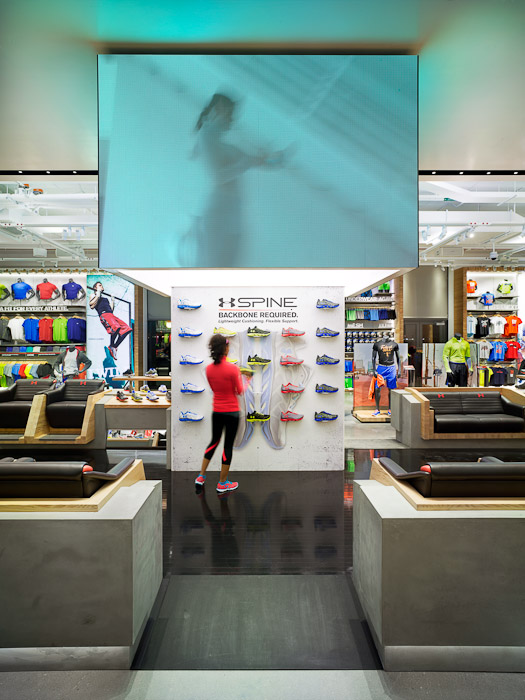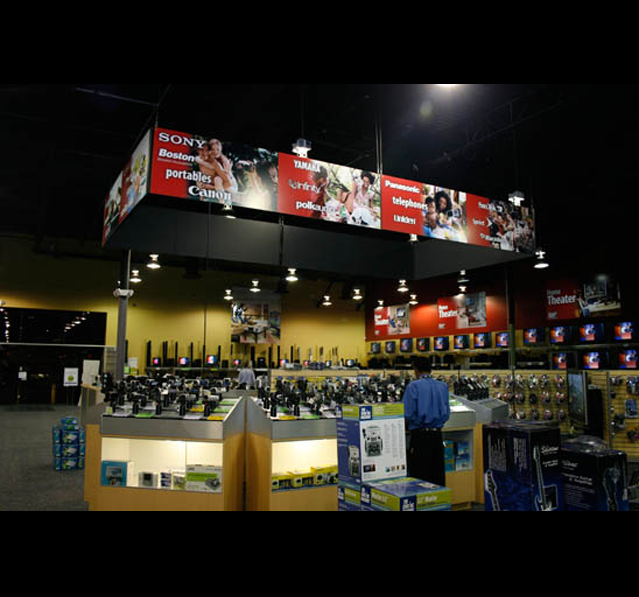4 More Ideas to Drive Retail Sales with Experiences (Part 2 of 3)
Experiences are indeed a great differentiator that allow us to draw traffic inside your retail location. The competition is stronger than ever in retail – between subscription service companies and eCommerce websites, there are plenty of choices when it comes to how and where they spend money and time. A strategy that employs experiences, is something that an online retailer will never be able to deliver on. When executed well, it can drive sales, brand, and memorability – all of which lead to brand loyalty. If you are not doing any in-store experiences, below are some tips to help get this jump started. For the retailers that opt to do the same thing the same way, moving forward it can cause the upcoming years to be rough for your retail business. One reasons experiences are so attractive is because of the challenges that all retailers face with the online onslaught. When somebody makes a purchase from your online store there is an instant dopamine hit from the initial purchase and even more dopamine as the anticipation builds over the following days prior delivery. Every brick and mortar customer gets the same hit initially but does not get the second hit of dopamine from the anticipation from the impending delivery. When walking out with the item in hand, dopamine is only produced 1 time. To put it a different way, every shopper that buys from your store online is on a high from the time they place the initial order, to the moment when they are opening the package at home and then using the item. For eCommerce retailers, this is great news, but the downside of this is much steeper if you get this process wrong with your retail brick and mortar location. The in-store experience must be exceptional moving forward. To stay competitive, you need to give them compelling reasons to come down to your store and shop. Looking for ways to do just that? We have compiled 8 tips with case studies to get things started.
1. Redefine the Checkout Experience
According to Brainboost.com, the average person in America will only spend 8 minutes in line before our patience runs out. Long lines at checkout are big a turn-off and can result in customers abandoning their purchases. Research has found that “Americans will abandon a checkout line and leave a store without making a purchase after 8 minutes of waiting in a checkout line.” Don’t allow long lines define what you are known for and ultimately affect your bottom line. If you’re dealing with lengthy wait time at checkout, take corrective steps to speed things along. Following are a couple ideas:
Have additional registers ready
Open new registers to combat long wait times (remember, we only have 8 minutes max) and make sure you always have appropriate staffing on site to serve customers and prospects. You could consider making your check out mobile with iPads or similar POS, for your customers and associates alike. It is easy to turn on another iPad if it’s needed on the fly. Of course, this would not work with a traditional cash till system. An additional benefit of using an iPad is that it lets you untether the checkout process. The Apple store has done an excellent job with this and does almost all of their transactions on their iPads, in addition to having a traditional register as well. Taking the checkout process to the customer and ringing up sales from anywhere in the store has great advantage to everyone involved.
Implementing an in-app checkout
Looking for a more innovative and tech-forward way to combat long checkout lines? Have a look at what was recently done at two different chain stores – a supermarket chain and Okay Convenience Stores. Seeking to save customers more time and enhance their shopping experience, Colruyt Group launched an initiative to develop and implement a mobile shopping app for customers with self-scanning and self-checkout capabilities. In addition to saving customers time by letting them do more for themselves and avoid waiting in checkout queues, the app. shows the current bill total at any time for shoppers on a budget and allows shoppers to bag their purchase right away without the need to unload and rebag items at the cash register. The self-scanning mobile app. also reduces pressure on cashiers especially at peak times and free up employees who would otherwise operate traditional POS terminals.
No doubt this the app makes shopping easy and convenient, and it hints at what the future of in-store checkout might look like. This solution isn’t the right fit for every retailer (especially if you don’t have a mobile app) but it’s worth consideration if it fits your company.
2. Promote Community
Promoting a sense of community may, or may not, work for your location or product. If it does, you can find ways to bring people together in your around your location, products or a cause you believe in. Invite customers, prospects, and the community to your events where they can learn something new, connect with like-minded people, or provide a way to break up their routine that we all get caught in at times. One way that Dicks Sporting Goods has done this I by providing sponsorships to local sports teams in the area of their store locations. They are seeking to support the teams and communities that support them. This also allows for the feel-good experiences’ customers have to be associated with your products and brand. It can show up a variety of different ways and sometimes it can be something as simple as sponsoring a 5k race in your area. An iconic example of this for a surrounding a product and locations is the Harley Davidson Rally held annually in Milwaukee Wisconsin. They combine activities that draw customers from around the world. There is live entertainment, custom culture artisans, pinstriping live, live tattoos, photo ops, museum tours, free give aways, demo rides of course, and a plethora of merchandise. The sense of community and the elevation of their brand is legendary. Building a community isn’t just about holding events, although this is a proven method. Creating a sense of community around your product or location, requires fostering real relationships with customers and connecting with them on a regularly.
3. Utilize Immersive Experiences
Immersive experiences can manifest themselves several different ways. Technology allows for immersive experiences in a completely new way over the last several years. Attract customers to your store or to your specific product, by considering the use of AR or VR (Augmented Reality or Virtual Reality) and make a long-lasting impression. Doing this will grab the full attention of the customer and increase sales. Virtual Reality (VR) in retail opens up several opportunities for retailers and enables them to connect with a wider audience. VR allows for a one of a kind experience, without the need for physical store expansion. It gives the customer an experience they could not get online. VR eliminates space limitations, time constraints and allows retailers to reach a larger audience. IKEA, the Swedish furniture retailer has taken their immersive VR to a new level, allowing viewers to change the color of surfaces, furniture, rugs, and to shrink themselves in order to navigate around the room more easily. IKEA said it had been exploring a variety of new technologies for the last few years, testing different digital tools before identifying VR as one of the best technology to pursue for the future. One of our clients, Mueller Water Products has developed some ground breaking technology in the water industry that allows for fire hydrants to be monitored remotely for identifying problems and measuring performance. The technology however is located deep inside the hydrant. We partnered with them to roll out an AR app that allows the customers to use an iPad to explore the inside technology of a fire hydrant and not have to cut away part of an actual fire hydrant, which is costly, time consuming and very heavy. The results allowed customers to clearly see the benefits and why the product was going to help them be more efficient. In the end, the sales cycle was reduced and the customers became more comfortable with their purchase.
4. Pop-Up Shops
If you sell primarily online, consider hosting a pop-up shop or partner with a complementary business to hold an event at their store. For example, the online mattress-in-a-box retailer Leesa gave customers a chance to try its product in-person. To make it memorable, it turned the experience into a statement by holding the pop-up shop in a SoHo gallery filled with art from ArtLifting, an online marketplace of works created by artists who were disabled or homeless. The event was billed as being a “no-pressure environment,” with no aggressive salespeople. Customers could lie down on the mattress and try it out, or simply enjoy a cup of coffee and peruse up-and-coming artists.









